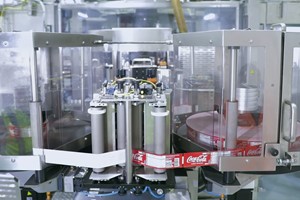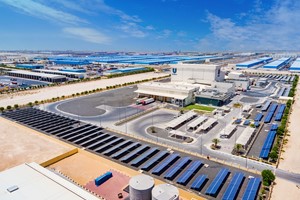In December of last year, COP28 – the United Nations conference on climate change – brought together climate scientists, business leaders, politicians, journalists, and NGOs to seek solutions to one of the most pressing issues of our time: climate change. While energy dominated much of the conversation, there was a growing focus on a critical but often overlooked aspect of climate change: food waste.
The food system is responsible for 24% of all greenhouse gas emissions, second only to those from electricity. In comparison, transportation accounts for only 14% of greenhouse gases, a significant portion of which is used to transport food. The food waste problem is particularly acute in the restaurant industry, where merely 15% of unused food is recycled or donated, meaning that 85% is simply discarded. This contributes to a staggering statistic: 40% of all food produced worldwide goes to waste. Consequently, nearly 10% of global greenhouse gases could be eliminated overnight if behaviors changed and the global food supply chain improved.
The Root Causes of a Dysfunctional Supply Chain
The food system is one of the most complex jigsaw puzzles, connecting 540 million farms to 8 billion consumers. An average lunch in major cities like New York, Los Angeles, London, or Shanghai might feature quinoa from Paraguay, avocado from Mexico, chickpeas from India, salmon from Scandinavia, or beef from Argentina, all cooked with oil from Ukrainian sunflowers and salt from Nepal. These products traverse intricate and inefficient routes, changing hands an average of nine times before reaching the consumer. The scale is staggering: 500,000 different products from trillions of tons of harvests, all transported across continents. This fragmented and disorganized system is held together by countless quick fixes and spot solutions.
The food supply chain primarily operates as a “push” market, where producers push supply without clear visibility into market demand. This results in an oversupply, with buyers leveraging this superior negotiating position to dictate prices. This dynamic undermines producers' incomes and their ability to invest in modern food production methods, perpetuating a vicious cycle of overproduction and waste.
This system has led to an almost complete absence of accountability. Farmers sell to harvest managers, who sell to brokers, who in turn sell to restaurant owners, and so forth. Each actor in the chain pushes the product to the next step, ending their responsibility there. If there is no demand, the product is wasted. There is a lack of systemic thinking and alignment across the various components of the food system. A significant portion of the sector still operates using traditional pen-and-paper methods, with very low levels of digitalization. This hinders data-driven decision-making and creates further obstacles to transparency across the supply chain.
Creating a Globally Connected Digital Food System
To effectively address these challenges, coherence and collaboration at every level are needed, from farmers and buyers to wholesalers, distributors, brokers, and restaurant owners. Every value-adding business within the food supply chain must adopt technology that facilitates waste reduction and cost efficiency through process automation. Transformative measures should include leveraging data and AI and revamping back-of-house operations for suppliers, including warehousing, inbound operations, and purchasing.
Fortunately, several new technologies have been launched in recent years that can help restaurant owners adopt a digital approach to reducing food waste. Automated inventory management systems can help restaurants minimize food loss and waste through more accurate demand forecasting and real-time stock level monitoring. Tools like Choco streamline the ordering process, avoiding errors and duplicate orders that lead to waste.
Similarly, tableside and self-ordering technology can help restaurants avoid mistakes that result in wasted food. New solutions also help restaurants avoid sending surplus food to landfills. For instance, Copia uses an algorithm to match excess food from restaurants and other hospitality businesses with local non-profits and arrange third-party pickups. Too Good To Go has created a mobile app that allows consumers to purchase leftover, expiring, or misshapen food at discounted prices from local eateries.
Looking Towards the Future
While some may view this vision as grandiose or even impossible, the reality is that this problem urgently needs solving. This is not only due to the current challenges posed by climate change but also because the food system will need to feed a population of 10 billion by 2050. There is a limit to how much agricultural land can be expanded, making food waste reduction imperative.
There is also a strong economic incentive. Recent data indicates that a 20% reduction in food waste in the restaurant industry could save businesses up to $7 billion annually. Additionally, there are growing reputational and competitive reasons for controlling food waste. According to a 2022 survey of global consumers, 68% believe that restaurants should have processes in place to avoid waste, and 43% would pay more for sustainable takeout food.
The message is clear: as business leaders, food suppliers, restaurant owners, chefs, and consumers, everyone is part of the ecosystem and has a role to play in reducing food waste. This is not just an environmental crusade but also smart business and an urgent humanitarian need. This crisis can be turned into an opportunity for lasting change. The future of food can be sustainable, starting today.
By: Daniel Khachab
https://restauranttechnologynews.com/














